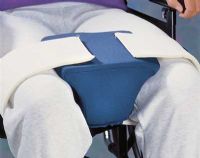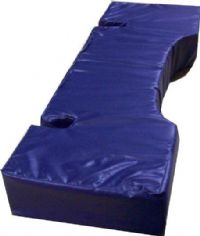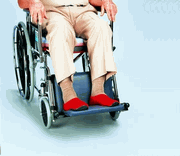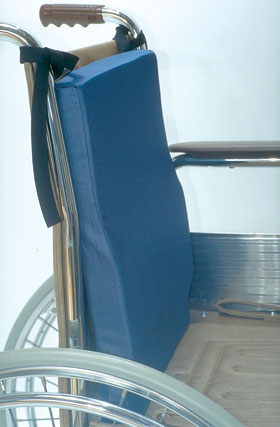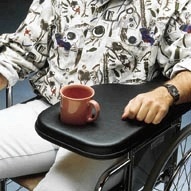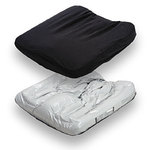Summary of Positioning Procedures
The table below summarizes some basic positioning procedures for clinical treatment and interventions. These procedure are for comfort. A risk of prolonged positioning in a preferred position (e.g., geriatric patient who likes to sit up in her wheelchair to watch an NFL game and post-game highlights) is at risk for progressive loss of joint and soft tissue motion. As you read your text and review the procedures, consider which structures are at risk for contracture with each position. (Hint: See Box 5-2 in your text).
Take a look at the handout included in the right sidebar on this web page. Here you will find some excellent images and procedures for positioning in bed. We will be practicing these techniques in lab.
|
position |
head and neck |
arms/hands |
legs/feet |
|
supine |
small pillow/towel at head and neck
|
positioned at side or supported on pillows; limbs totally supported by bed/mat
|
small pillow behind knees; "float" ankles to decrease pressure; may use towel rolls on lateral leg for neutral rotation
|
|
prone |
small pillow/towel roll at forehead |
rolled towel under anterior scapula; hands under head or along sides |
pillow at anterior lower leg/ankles; |
|
side lying |
aligned with trunk and pelvis; supported in midline position; may need bolsters or extra pillows to support trunk in midline |
upper UE supported on pillows and slightly forward |
hip and knee flexion with pillow between knees |
|
sitting |
support as needed depending on patient function |
supported as needed for the intervention; lap tray or use of arm rests on w/c for prolonged sitting |
supported with feet on floor/footrests/stool |
Considerations for Specific Patient Populations
|
Condition |
Description |
Positioning |
|
Trans femoral amputation |
A surgical removal of the lower leg above the knee |
Prone to prevent hip flexor contractures; limit sitting; limit hip flexion |
|
Trans tibal amputation |
A surgical removal of the lower leg below the knee |
Prone to prevent hip flexor contractures; limit sitting; limit hip flexion
|
|
Hemiplegia |
Condition which may result in significant weakness or spasticity on one side of the body |
Avoid surgical slings for upper extremity support; use resting hand splints to prevent contractures; monitor head and neck and assist with positioning in neutral; vary position of hip, knee and ankle joints during the day to prevent contractures due to spasticity or decreased use |
|
Rheumatoid Arthritis |
An inflammatory disease process which affects joints in the extremities |
Avoid prolonged immobilization; encourage gentle ROM with progressive return to active exercise as able when symptoms subside |
|
Burns and Skin Grafts |
May include harvested (donor) or regenerating skin |
Avoid positions of comfort; soft tissue stress are necessary to prevent skin (and therefore joint) contractures; coordinate with health care team to assure ROM parameters follow physician orders and PT guidelines. |


